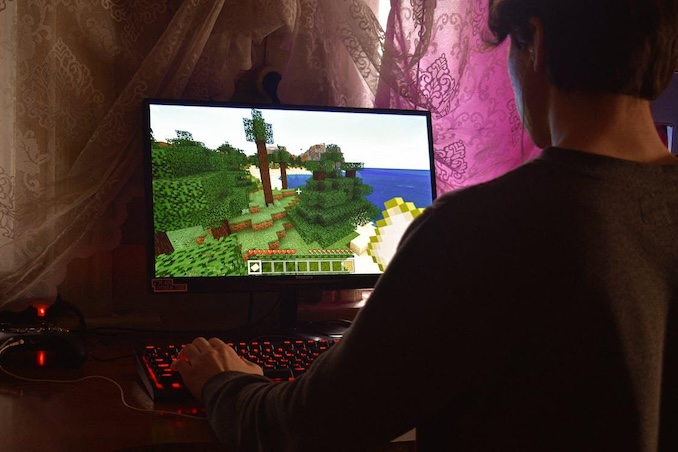There is always something new to discover in the ever-evolving world of online entertainment. With the popularization of video games, including iGaming, and social media as a pastime, there have been more and more reports of increased user bases among companies in these respective industries. One such example is the livestreaming industry.

However, streaming has been around for longer than most people think. It has also been the topic of many debates worldwide on its benefits and detriments to our general well-being. Either way, the last 25 years of video game livestreaming have provided the industry enough time to make amazing and useful innovations.
In this article, we’ll look into how streaming ties in with gaming and socializing and dive deep into why websites such as Twitch and Kick have started an online entertainment revolution in the world of gaming. Keep reading to find out more!
Livestreaming: iGaming’s New Frontier
When it comes to gaming in general, it’s no secret that livestreaming has revolutionized the industry. It has completely changed the way most gamers share their gaming experience and even allowed them to capitalize on the business model websites like Twitch have created.
Additionally, live casino games such as those on Luckiest Online Casino have done even more for iGaming and the industry as a whole. This impressive technology has increased the popularity of iGaming establishments and is certainly an experience every player should try. This is because it brings a social aspect to the game, allowing players to interact with the live dealer or host.
The most important part of livestreaming is the interactivity between the creator and the viewer. Using a live chat, viewers can ask questions, comment, and respond to the creator as they livestream. This direct engagement with the audience is one the creator can hardly achieve using other forms of media such as YouTube videos. With pre-recorded videos, the best-case scenario is responding to comments, either in the comment section or by creating another video.
This has also led to an increase in online and even parasocial relationships in the case of larger creators. Both are normal and healthy occurrences in media consumption in the right amount. In some cases, they can even prove to be beneficial for the viewer’s mental health.
Online Gaming and Livestreaming: A Symbiotic Relationship
Online gaming itself has always had some benefits for its community. In the last few years, online gaming had a chance to shine and bring people together. This has also proven that online gaming can ease loneliness whether in times of crisis or in everyday life.
These benefits only become more prominent when we combine online gaming with livestreaming. This creates a symbiotic relationship where the viewer can interact with the streamer while simultaneously playing an online game with them. From the streamer’s perspective, it also lets them showcase interesting and funny situations that inevitably happen during online gaming.
The rise of eSports and VR have also contributed to this symbiotic relationship. With more of these events appearing on livestreams, they also attract a larger audience which positively contributes to the game or event’s community.
Community-Building in the Livestreaming Era
However, building a community isn’t always as easy as just starting up a stream for most streamers. There needs to be a conscious effort across all relevant social media platforms on the streamer’s part to yield positive results.
Social media such as Twitter and YouTube are key elements to the success of a streamer in building up their community. While livestreams can be the main content, there is a need for additional promotional content that will help potential viewers discover the streamer.
This is mainly due to the low discoverability of streamers on livestreaming platforms like Twitch. Although the website’s home page showcases livestreams that may interest the consumer, they rarely showcase smaller streamers.
Using other platforms to drive more attention to their Twitch and Kick streams is something nearly all streamers do. This includes posting relevant content that fits the respective platform and interacting with viewers, which is especially prominent on Twitter.
The Synergy of Livestreaming: Where Gaming and Socializing Meet
There are a variety of ways that streamers can combine livestreaming, gaming, and socializing to create a unique experience for their viewers.
They can achieve this through special events, inside jokes, and a certain culture the streamer can foster. This helps create a sense of belonging in the viewer and integrates them into the community.
Another method is collaboration streams, which are a great way to bring different communities together. By co-streaming with someone, streamers can also provide a good insight into their socialization methods. This also creates more opportunities for growth and expanding the reach of the streamer.
There are many other forms of content and methods in which streamers can combine gaming and socializing in a way that is beneficial to both them and their audience.
Shaping Culture Through Livestreaming and Gaming
Livestreaming in combination with gaming has become an integral part of online culture. It has helped many games become popular favorites among many communities. Some examples are Rocket League, Among Us, and Fall Guys. Indie game developers have also benefited greatly from the cultural impact their games have made on the livestreaming world.
Some memorable gaming and livestream moments that are captured on video can also make rounds across the internet. In this way, streamers can also contribute to meme culture and online culture in general.
In online games, streamers can also greatly contribute to trends within the gaming world. For example, a League of Legends streamer can popularize playing a certain champion or build within the game. This also helps shape the culture surrounding the specific game.

